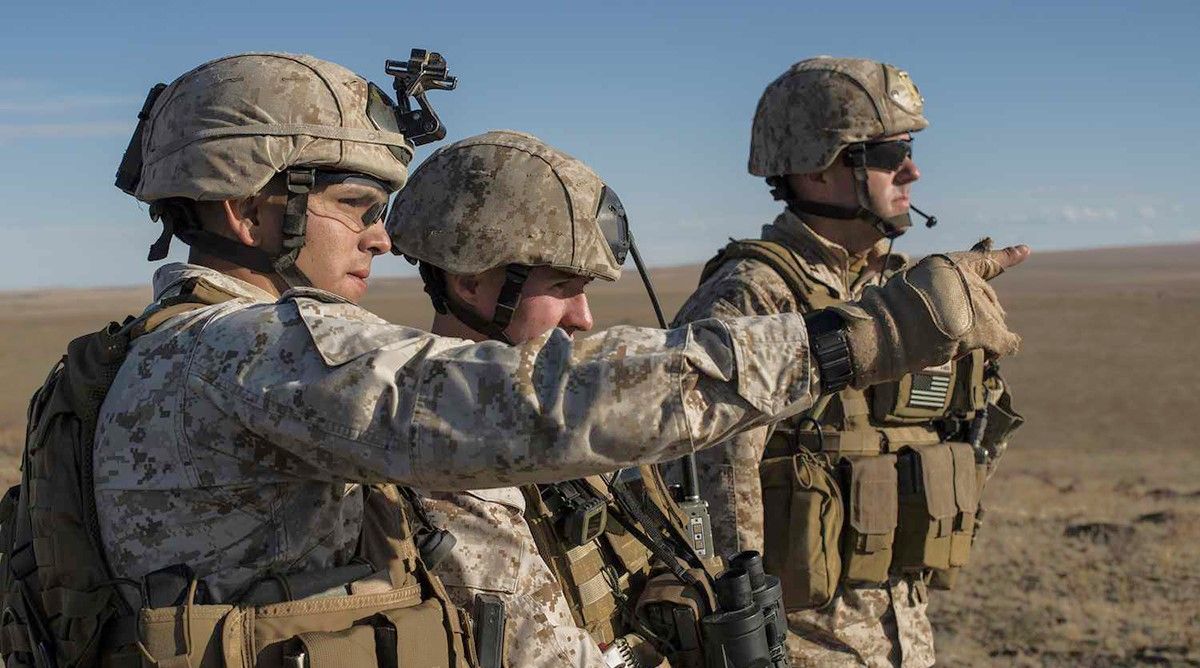
Marine Corps Maneuver Warfare Doctrine Principles & Concepts
The Marine Corps doctrine of maneuver warfare revolutionized combat. This article breaks down the key components and strategies that make this flexible methodology so effective.
Maneuver Warfare and the Marine Corps
The Marine Corps has a warfighting doctrine centered around maneuver warfare. It focuses on fast, adaptable, and opportunistic operations. Instead of engaging in prolonged battles of attrition, maneuver warfare aims to bypass the enemy’s defenses.
The objective is to swiftly penetrate the enemy system and dismantle it. This approach recognizes the importance of speed and agility in achieving victory. By avoiding the enemy’s strongholds, we can disrupt their operations and exploit their weaknesses.
Outsmarting the adversary and striking where they least expect it are core tenets of maneuver warfare. It’s a strategy emphasizing efficiency and effectiveness in accomplishing a mission.

A Winning Objective
The ultimate goal of maneuver warfare is to render the enemy incapable of resisting. This is done by shattering the enemy’s morale, breaking them mentally, and shredding their physical cohesion. Properly executed, this disrupts the enemy’s ability to fight as a coordinated whole.
Maneuver warfare doesn’t seek to destroy the enemy physically through gradual attrition. Instead, it aims to achieve a decisive impact in a shorter time frame. By inducing panic and paralysis, the enemy isn’t able to mount an effective defense.
Maneuver warfare seeks to achieve victory swiftly and with minimal cost and resources by targeting the enemy’s ability to function together.
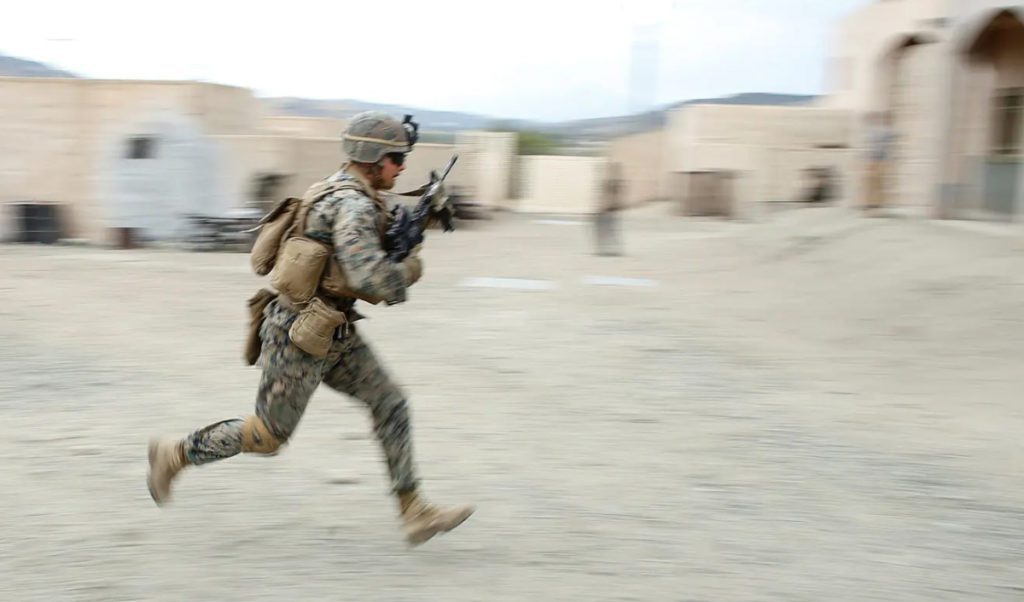
Speed Kills
Speed is crucial in effective maneuver warfare. Seizing the initiative dictates the terms of action, which puts the enemy at a disadvantage.
A high tempo keeps the enemy off balance and increases their friction. Establish a pace that the enemy cannot match or sustain. Swift action means the enemy’s reactions become progressively delayed and unable to keep up with events.
The ability to maintain speed and outpace the enemy is a key component of maneuver warfare.
Concentrated Fire Upon Weaknesses
Concentrating fire and forces at decisive points is another key aspect of maneuver warfare. When the opportunity arises and aligns with broader objectives, destroy enemy elements.
Focused firepower against critical enemy weaknesses results in a high attrition rate for selected enemy forces. But the greatest impact of firepower isn’t physical destruction, which takes time to add up. Instead, the disruption it causes is critical. The bold and rapid striking of the enemy’s ability to fight inflicts the most damage.
Once an advantage is identified, action must be relentless and without hesitation. Any signs of weakness are sought out and exploited with all available combat power.
When the decisive opportunity presents itself, maneuver warfare stresses aggressive action until victory is achieved.
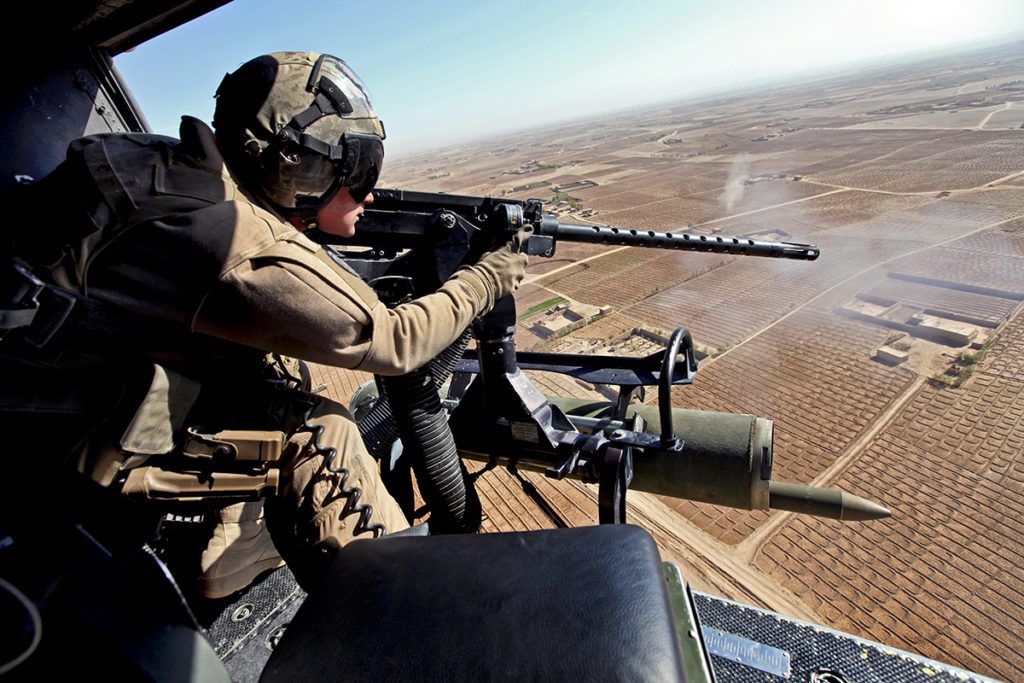
Focused Effort in Maneuver Warfare
In Maneuver Warfare, focus is critical for maximum effect. Concentrated effort maximizes the impact on the enemy. Focused resources and violent combat induce shock effects that disrupt the enemy’s capabilities and cohesion.
The goal is a state of confusion and disarray among the enemy forces. Reeling, the enemy is unable to effectively respond.
The Element of Surprise in Combat
Surprise is a key element of maneuver warfare. To surprise the enemy requires studying him. Understanding his thoughts and perspective of you is key.
Once an understanding of the enemy develops, deception shapes his expectations, making him believe you will act in a certain way.
However, these expectations are used against him by striking at unexpected times and places. By appearing unpredictable, the enemy becomes off balance and can’t effectively counter combat actions.
Maneuver warfare requires avoiding adherence to rules and patterns which limit imagination and initiative. Instead, cultivating ambiguity and appearing dangerous is vital. Loosely prepare for numerous options for action. This keeps the enemy uncertain about your intentions and forces him to react defensively.

Temperament of a US Marine
Temperament plays a crucial role in maneuver warfare. This is why the Marine Corps works so hard to develop key traits in its ranks.
To win requires individuals who can handle uncertainty and embrace the unpredictable nature of the battlefield. Flexibility and adaptability with strong decision-making in fluid situations are key traits.
Those who possess an exploitative mindset are always ready to seize every opportunity that presents itself. However, this requires moral courage and the willingness to take responsibility for one’s actions.
Self-discipline and loyalty to the objectives set by our superiors are critical to success. Additionally, the ability to think beyond your own level and act in a manner that aligns with the larger objective is important.
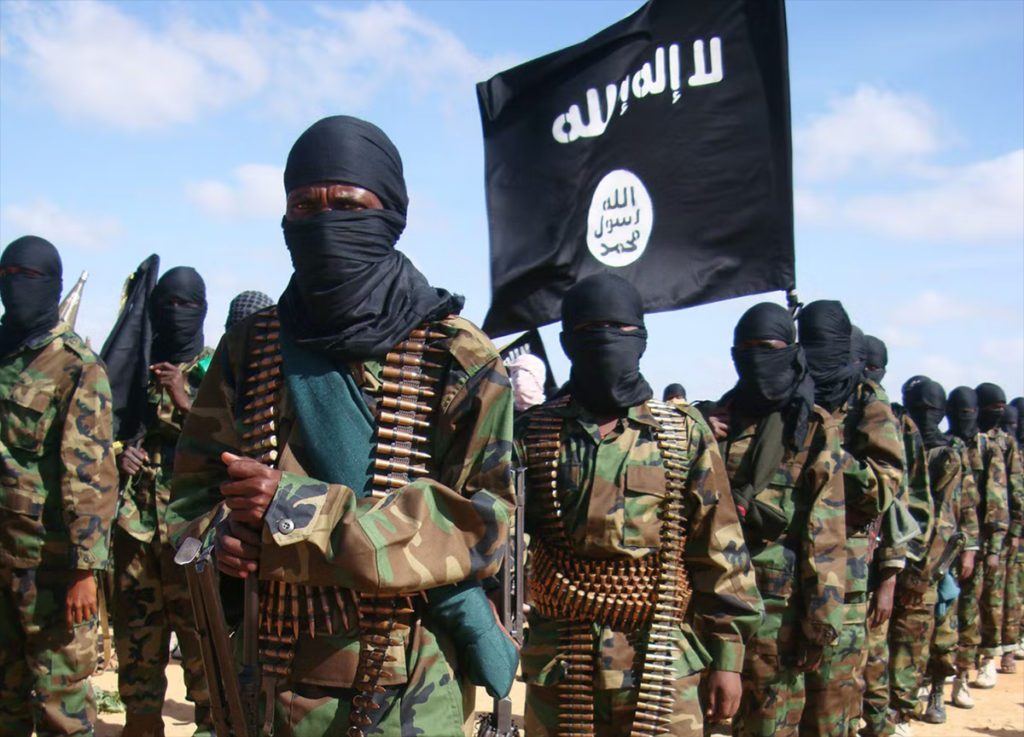
Orienting the Enemy
When engaging in maneuver warfare, you must orient yourself to the enemy. This means you must understand the characteristics allowing their system to function.
With this understanding, you can effectively exploit the enemy’s weaknesses and set them up for defeat.
It’s crucial not to assume that the enemy thinks like us or shares the same values and objectives. Each adversary has their perspective and motivations, which you must comprehend to outmaneuver and overcome.
By gaining insights into the enemy’s thoughts and mindset, you can better anticipate their actions and develop strategies to defeat them.
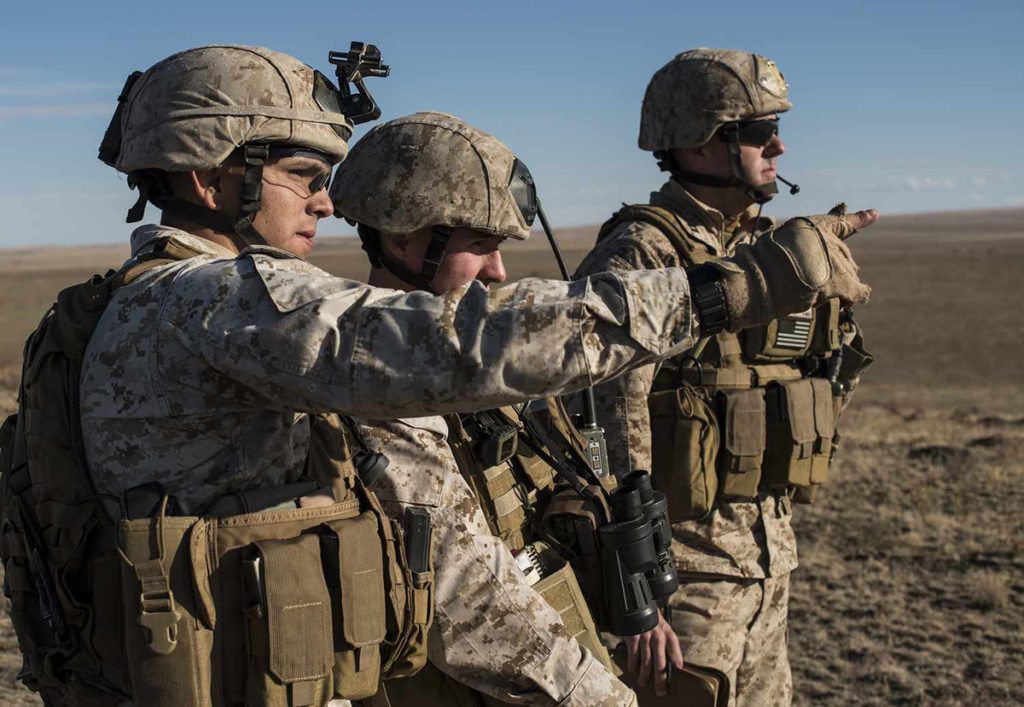
Command Philosophy of Maneuver Warfare
In maneuver warfare, the command philosophy emphasizes decentralized command and control. This means subordinate commanders are empowered to make decisions based on their understanding of their senior’s intent. There’s no need to constantly seek approval from higher levels.
A decentralized command is implemented through mission tactics. This means focusing on human characteristics like boldness, initiative, strength of will, and imagination. Reliance on procedure and equipment is frowned upon.
Effective communication is vital to this command philosophy. Key personnel must communicate enough to understand each other intuitively. Long-term working relationships enhance communication and coordination through understanding.
Another principle of maneuver warfare is the commanders’ position close to the action. This enables proper assessment of the current situation. It also helps maintain camaraderie with their subordinates. However, this doesn’t mean micromanaging, as soldiers are trusted to exercise their own initiative.
A central location like a combat operation center is ideal for an overall appraisal of the situation. This allows for a balance between maintaining the big picture and having situational awareness at the forward command level.
Finally, embracing uncertainty is crucial in maneuver warfare. Combat inherently involves chaos. Instead of trying to maintain absolute control or certainty in all actions, maneuver warfare leverages the chaotic nature of warfare as a weapon against adversaries who struggle to cope with uncertainty.

Shaping the Action of Combat
In Maneuver Warfare, shaping the action is critical to achieving victory. It’s essential to establish clear objectives, understand their reasons, and determine how to accomplish them.
Identifying the enemy’s vulnerabilities is crucial in undermining their strength and achieving mission success. By viewing things from the enemy’s perspective, surprises can be avoided, and preparations can be made to exploit their weaknesses. By shaping the action, the enemy is vulnerable to attack, friendly forces’ maneuvers are aided, and the time and place of decisive battles are dictated. Additionally, stockpiling critical supplies for future operations is part of the shaping process.
Influencing the action to one’s advantage is achieved through careful planning. But rather than trying to control every aspect of the timeline, the focus is on shaping the general conditions of war. This involves a combination of lethal and nonlethal actions, such as direct attacks, psychological operations, and electronic warfare. The aim is to target specific enemy capabilities that allow friendly forces to maximize their own capabilities.
Various plans are employed to achieve this. Examples include funneling the enemy in a desired direction, psychological operations, blocking or delaying their reinforcements, and shaping enemy expectations through deception.
Planning ahead involves laying the groundwork for future actions, anticipating events, and developing an understanding of the situation. As the level of command increases, so does the need to shape the action further ahead in time and space.
An advantage in maneuver warfare is obtained by proactively shaping the conditions. This sets the stage for success in upcoming battles and operations.
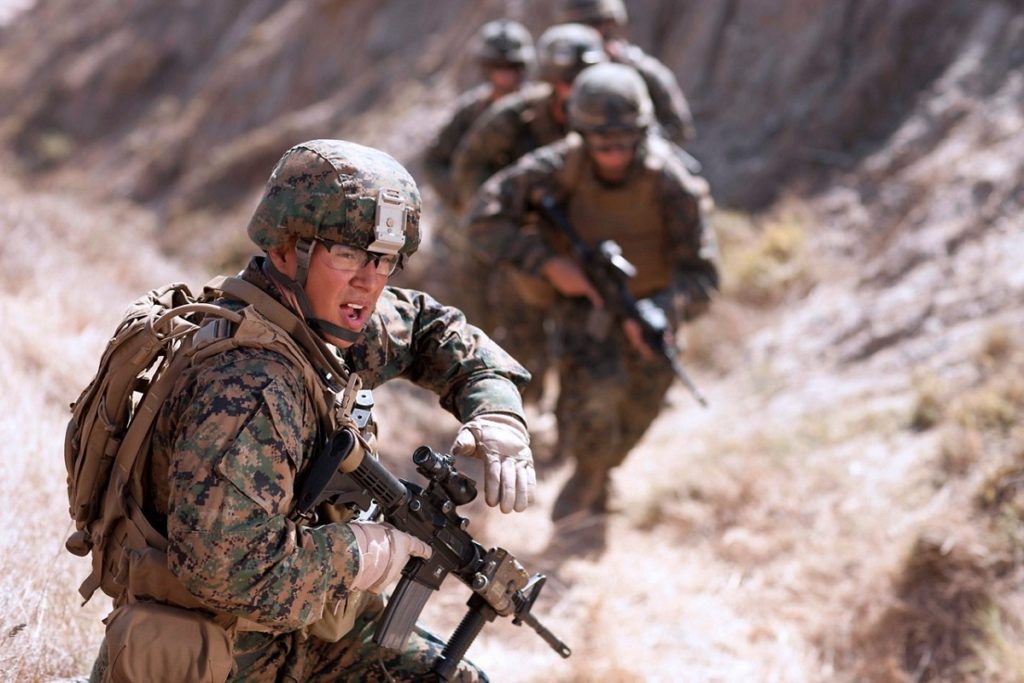
Decision Making: Decisive, Rapid Execution
All actions in combat are the result of decisions or the lack thereof. To make effective decisions, situational awareness, and creative thinking are essential in devising practical solutions. Consider the enemy’s anticipated reactions and counteractions when making decisions.
Time is of the essence in decision-making. Recognizing how much time is available and utilizing it effectively is vital for victory. The advantage lies with those who consistently make decisions faster and execute them promptly.
Timely decisions require rapid thinking while considering only the essential factors. However, there are situations, such as deliberate planning, where time is not a limiting factor, and we should avoid rushing decisions unnecessarily.
It is important not to dwell on finding the perfect solution. Every decision is made in the face of uncertainty. There is no one-size-fits-all solution to battlefield problems. Instead, select a solid course of action with an acceptable level of risk and do so more quickly than your adversary.
As the saying goes, “A good plan violently executed now is better than a perfect plan executed next week.”
Awareness should drive decisions rather than habit. One must have the moral courage to make tough decisions in uncertain situations. Furthermore, accountability for those decisions is required. Through decisive and accountable decision-making, you can navigate the complexities of warfare and increase the chances of success.

Mission Tactics of Maneuver Warfare
Mission tactics are vital in maneuver warfare. Subordinates are assigned specific missions without dictating the exact methods to employ. Instead, they have freedom and responsibility to determine the necessary steps based on the current situation. This approach allows senior commanders to focus on broader strategic concerns.
The role of senior commanders in mission tactics is to provide support and guidance. The senior commander’s intervention in subordinate execution is minimal, occurring only in exceptional cases. This approach enables high-tempo operations and adaptability to changing situations.
Mission tactics encourage subordinates to think beyond their own levels and contribute to the overall mission. Unity is achieved through the harmonious initiative and lateral coordination of all forces rather than through imposed control.
By embracing mission tactics, military units can leverage their collective expertise and the adaptability of their personnel. Effective and efficient operations on the battlefield are the result. It fosters a culture of initiative, responsibility, and coordination, enabling units to achieve their objectives while maintaining flexibility in the face of evolving circumstances.

Maneuver Warfare Commander’s Intent
The Marine Corps concept of the commander’s intent plays a vital role in achieving harmonious initiative. The commander’s intent of maneuver warfare is a guiding principle for subordinates. It helps them grasp the broader context and purpose of their actions. By understanding the intent, subordinates can exercise their judgment and initiative while staying aligned with the higher commander’s objectives.
Every mission consists of a task and an intent. A task outlines what needs to be done, and the intent explains why. A task may change based on evolving circumstances, but the intent remains constant, serving as a guiding light for our actions. Through a clear understanding of the commander’s intent, subordinates can properly exercise their initiative.
The commander’s intent is established by assigning the mission and is reflected in each subordinate’s mission statement, contributing to the overall intent of higher commanders. This ensures consistency and continuity throughout the chain of command, allowing for effective bottom-up initiative. The intent can be expressed concisely, often focusing on the enemy and articulated in an “in order to” phrase.
Both senior and subordinate personnel bear the responsibility of comprehending the commander’s intent. Seniors should communicate their purposes clearly, without stifling subordinate initiative. Subordinates, in turn, should strive to understand the intent at least two levels up the chain of command. By embracing and internalizing the commander’s intent, military units can operate cohesively, with each individual understanding their role in achieving the larger mission’s success.

Main Effort: Focusing on Mission Critical
The concept of the main effort serves as a crucial tool for achieving unity in command. It involves designating one specific mission as the most critical to success at a given moment. This outlines a path to victory.
The unit responsible for the main effort receives priority support, while all other units provide assistance.
The main effort is a unifying force, harmonizing subordinate initiatives around a common objective. All decisions should support the main effort. Ensuring the success of the main effort becomes the linchpin for success.
The main effort is directed at the enemy’s center of gravity and critical vulnerabilities. It requires a commitment of combat power and a willingness to accept risks. Commanders should establish a main effort for each operation. As the situation evolves, the main effort may shift to support the unit most critical to success.
When shifting the main effort, the aim is to exploit success rather than reinforce failure. This flexible approach ensures that resources and efforts are directed where they can have the greatest impact. By prioritizing and supporting the main effort, military units can enhance their effectiveness and increase the likelihood of achieving the desired outcomes in the face of dynamic and challenging situations.
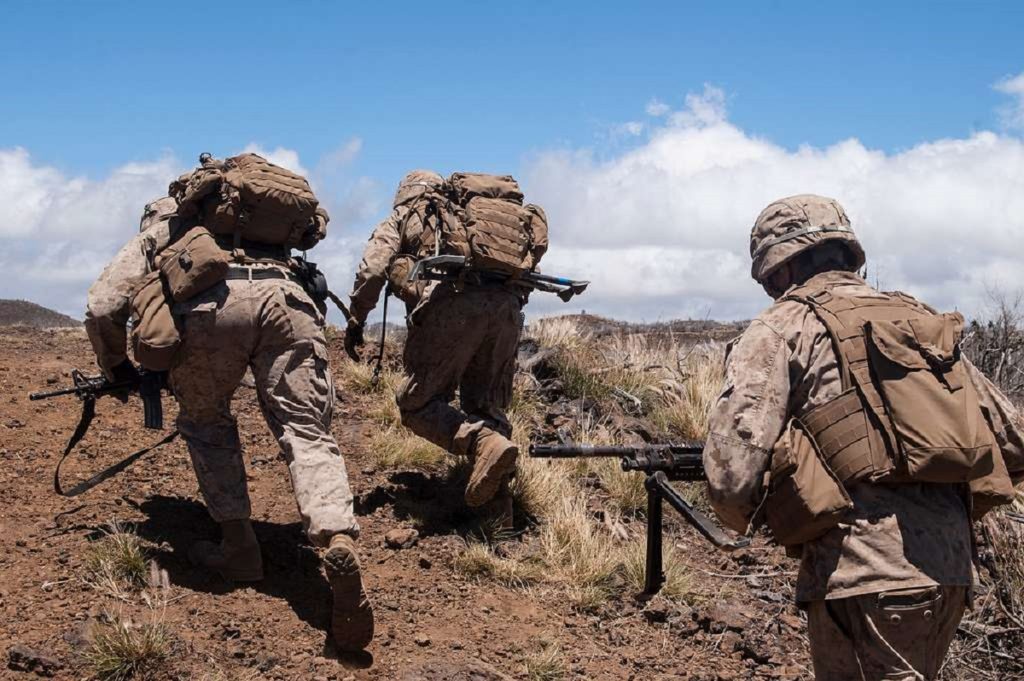
Surfaces and Gaps: Exploiting Weakness, Avoiding Strength
The concepts of surfaces and gaps are crucial for effective operations of maneuver warfare. Surfaces refer to the enemy’s strengths, while gaps represent their weaknesses.
The focus is on targeting and exploiting enemy weaknesses while avoiding their strengths. By pitting strength against their weaknesses, you can reduce casualties and increase the chances of achieving decisive results.
Existing gaps should be exploited whenever possible. But if they’re not readily available, we must create them.
Gaps can manifest as physical openings in the enemy’s defenses or vulnerabilities in time, space, or capability. Identifying surfaces and gaps requires sound judgment, as they can vary in each situation. It is important to note that the enemy may try to deceive by disguising surfaces as gaps.
Gaps are rarely permanent and demand flexibility and speed to exploit. Continuous and aggressive reconnaissance is essential for locating these gaps. Once identified, swiftly channel forces through these gaps, taking advantage of the opportunity.
If the main effort encounters a surface, we designate another unit operating within a gap as the new main effort and redirect support to it.
Combat power is pulled through gaps from the front rather than pushed from the rear.
Commanders rely on the initiative of subordinates to locate and exploit gaps, emphasizing the need for flexibility and quick response to opportunities. Blindly adhering to predetermined plans is discouraged, as adaptability and responsiveness are key to success in maneuver warfare.
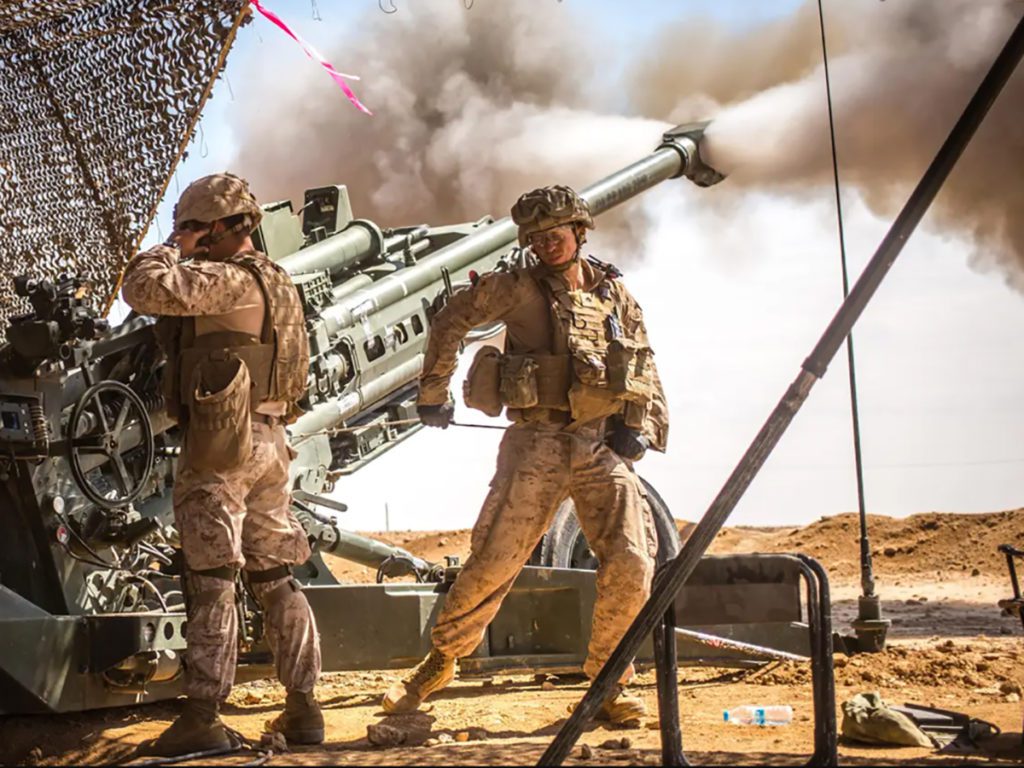
Max Power Through Combined Arms
Combined arms is a fundamental principle of maneuver warfare that maximizes combat power by effectively utilizing all available resources. It involves integrating different types of units and weapons to achieve synergy on the battlefield. The enemy is confronted with a dilemma, as countering one arm leaves them vulnerable to another.
Achieving combined arms effectiveness requires appropriate tactics, techniques, and task organization. Each type of unit brings unique strengths that enhance mobility and firepower.
Air-to-ground coordination is especially critical. Assault support aircraft concentrate ground forces, while artillery and close air support provide fire support to the infantry. Additionally, deep air support suppresses enemy reinforcements.
By employing this approach, the enemy must make hard decisions. To defend against the infantry, they must expose themselves to supporting arms. Conversely, blocking the penetration necessitates quick reinforcement, but avoiding deep air support results in slower movement.
Maneuver warfare seeks to put the enemy in a dilemma, forcing difficult choices that leave them vulnerable. The combined arms concept plays a crucial role in leveraging strengths and exploiting the enemy’s weaknesses.
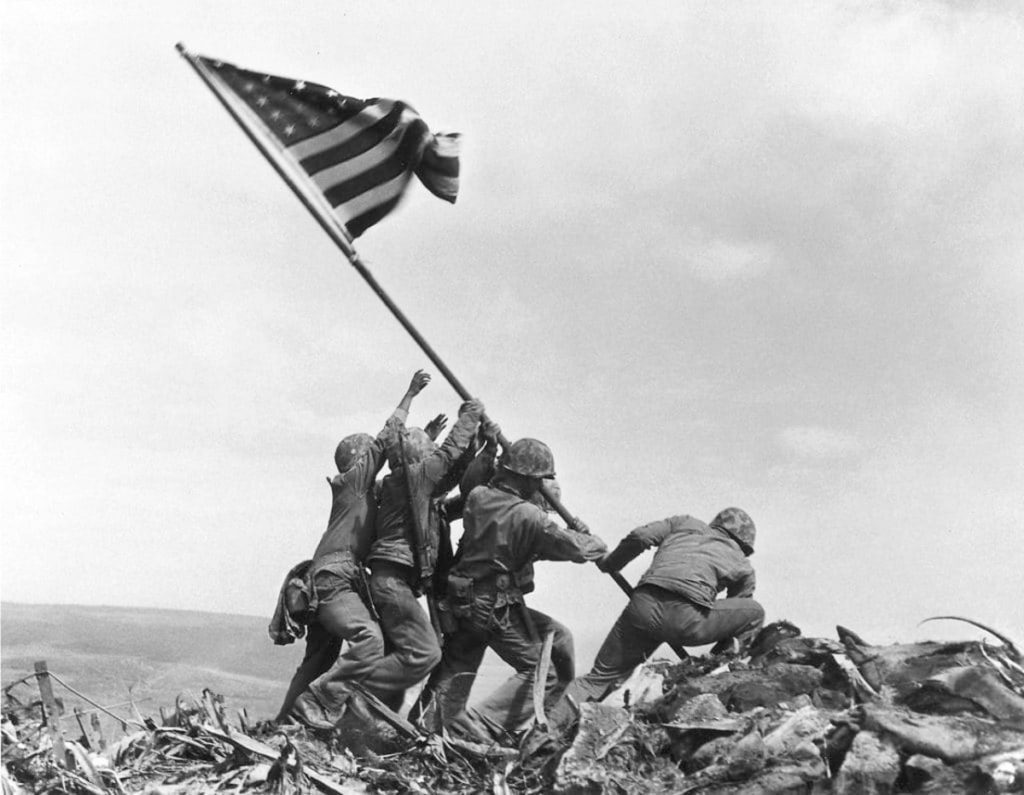
Maneuver Warfare to Victory
As you now understand, maneuver warfare is not a set of specific methods but a mindset. It applies to all levels of command, regardless of the type of adversary or environment.
Maneuver warfare is a way of thinking that shapes every action on the battlefield. The ultimate objective is to morally and physically shatter the enemy, leaving them paralyzed and confounded.
The essence of maneuver warfare lies in avoiding the enemy’s strengths, aggressively exploiting their vulnerabilities, and striking them where it hurts the most. It’s a philosophy of “fighting smart” to achieve victory. It requires critical thinking, decisive action, and adaptability to changing circumstances.
Embracing the US Marine Corps principles of maneuver warfare empowers you to become agile, terrifying, and effective warriors.

